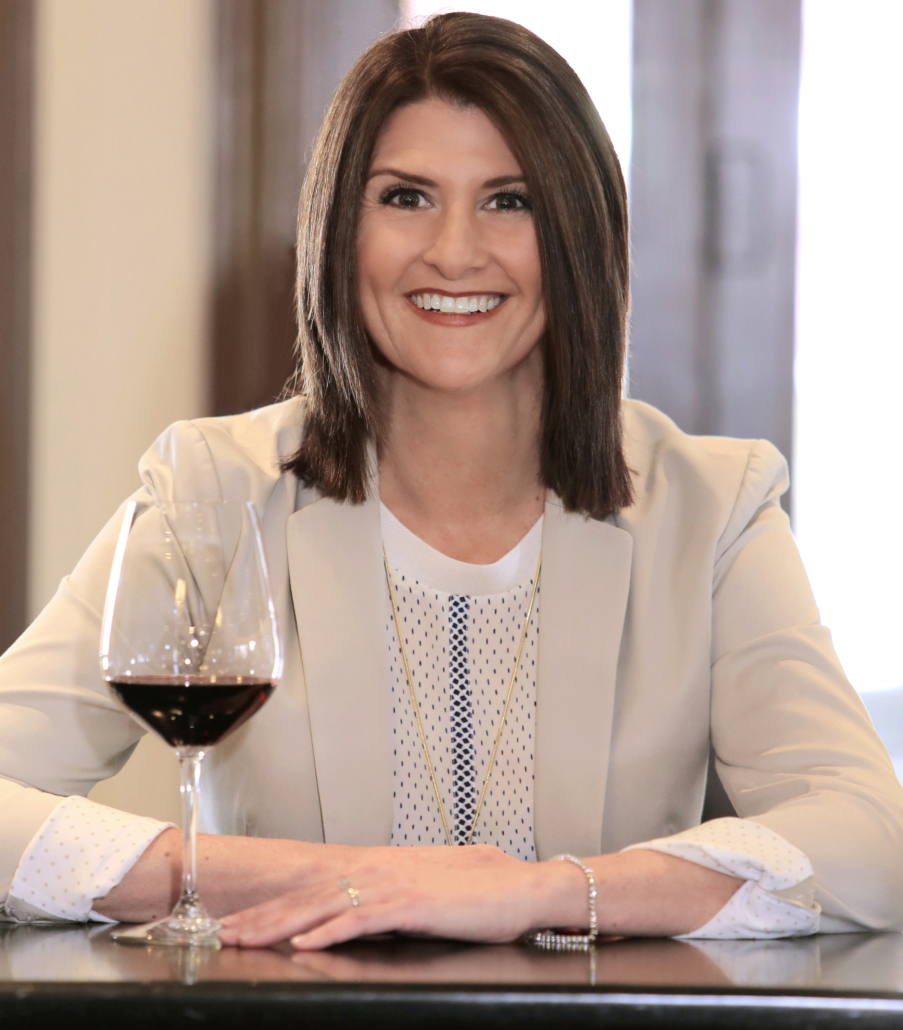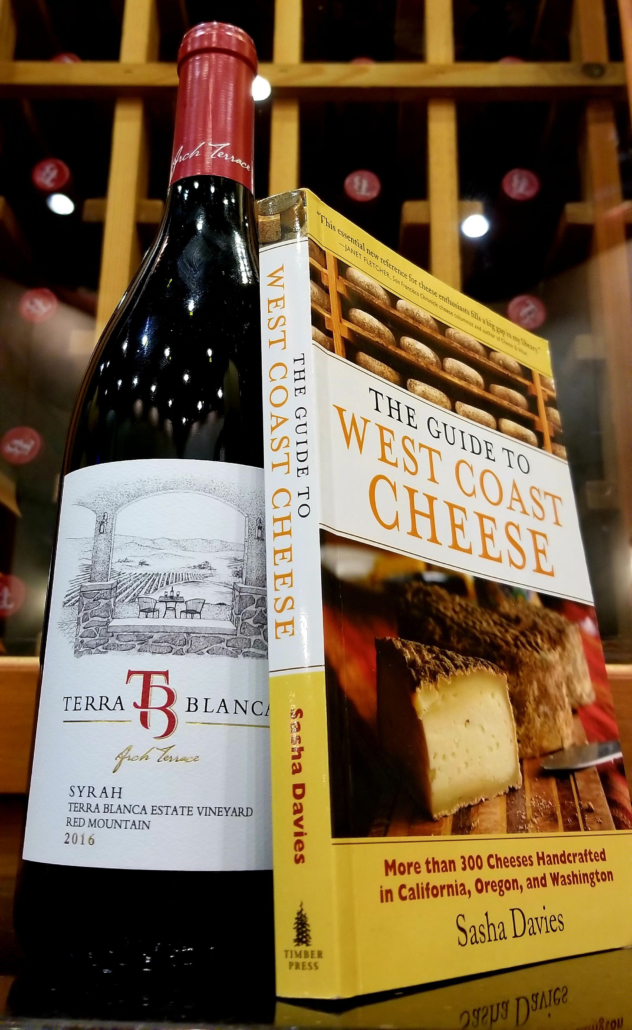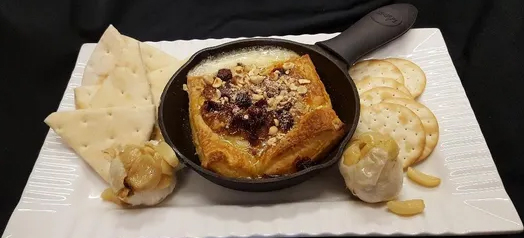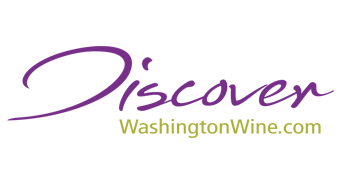Wine and cheese. A match made it heaven.
The world of pairing wine and cheese is vast and ever changing. There are no set rules — only guidelines to lend a hand.
By Shelly Fitzgerald

For Shelly Fitzgerald, Wine Educator at Columbia Winery, pairing wine and food is what she loves to do.
EDITOR’S NOTE: Shelly Fitzgerald is the Wine Educator at Columbia Winery in Woodinville, WA.
Wine and Cheese. Whenever one hears those two words together, the world seems to get a bit brighter. From the beginning, the two have been the perfect pairing. In fact, the ancient Greeks used to directly grate their cheese into their goblets.
Just like wine, cheese is also regulated and protected by the government. It was, in fact, Roquefort cheese that received protection first in 1925, inspiring the winemakers and vintners in the Rhône region of France to follow suit and develop the first AOC system for wine. The goal was to protect the place, the product (wine/cheese), and the reputation of that region.
Over centuries, as a way to preserve the season’s bounty, grapes were fermented into wine and milk turned into cheese. Other external factors such as historical events, experimentation, religion, and terrain have all played a significant role in determining the size, shape, and milk of a cheese.
As a sommelier, pairing food and wine is what I love to do, but like many things, some come easier than others. Even the most natural pairing can be tricky at times. Understanding a few important concepts will take the guess work away and have you creating an amazing cheese and wine pairing.
Terroir: This much used and hard to define term incorporates climate, aspect, soil, land, and all things that make a particular region special for both food and wine. Without giving too much thought, this was the original way food and wine pairing began. The concept of “what grows together goes together” was simple, that is, until the world became so large or, actually, so small. Our access now to the vast array of interesting and delicious foods has been amazing, but has complicated pairings just a bit.
Regional Pairings: This is the concept of “what grows together goes together” at its best. Think Goat Cheese and Sauvignon Blanc. Goats in the Loire Valley of France tersely graze on the grasses, flora, and fauna on the hillside terrain of the Loire Valley where Sauvignon Blanc finds its natural home.
The same holds true for New Zealand Sauvignon Blanc and Goat Cheese. The tangy cheese of New Zealand pays compliment to the grassy, herbaceous, and bright acidity tasted in the Sauvignon Blanc grown in the same region.
Another regional example is Manchego, a sheep’s milk cheese from the arid desert of La Mancha Spain. Sheep are able to adapt to most climates, but the Ewe in La Mancha are particularly special to be able to endure the harsh, barren, and unforgiving desert climate of the plains where Don Quixote is famously from. They produce in very small quantities a milk of nutty, caramel, and Brazil nut flavor that pairs perfectly with Spain’s signature and indigenous Tempranillo grape varietal.

The folks at Terra Blanca Winery and Estates Vineyard know a lot about pairing wine and cheese. They even sell a book in their tasting room called “The Guide to West Coast Cheese” so their customers can learn all about the subject. Photo by Jordan Neuhaus.
Pairing by Intensity: As a very general rule of thumb, fresh and soft cheeses pair well with white wines, with hard and aged cheeses standing up to the richer fuller-bodied reds. Delicate wines often require delicate and youthful cheeses such as fresh goat or a cheese with no rind and pair well with youthful wines like Sauvignon Blanc or Chenin Blanc. Complex and robust wines can handle more concentrated and intensely flavored cheeses.
A firm, dry cheese with pronounced notes happily accompanies a full-bodied red Syrah, Cabernet Sauvignon, or Merlot like those we experience in Washington state.
Textural Pairing: Never underestimate the texture of cheese and the body of wine to be your guide in a pairing. Texture can be used to compliment or contrast a pairing. As a complimented example, buttery Camellia would be a perfect pairing with creamy Chardonnay. A contrasted pairing would be a triple crème Brillat-Savarin and a palate cleansing high-acid sparkling wine.
Styles of Cheeses: There is no universally recognized system for identifying cheeses, but listed below are the most known styles with examples for reference.
Fresh Cheeses: No rind, high moisture, mild, and fresh. Ex: Mozzarella, Feta, Ricotta.
Aged-Fresh Cheeses: Thin and wrinkled rind, grainy to creamy. Ex: Clochette, St. Tola, Ketem.
Soft White Cheeses: Velvety white rind, Creamy inside. Ex: Camembert, Brillat-Savarin, Brie de Meaux AOC.
Semi-Soft Cheeses: Thin and dry to orange and stickey rind, mild to aromatic. Ex: Taleggio, Langres, Edam.
Hard Cheeses: Rough or polished rind; crumbly, complex flavors. Ex: Manchego, Cheddar, Pecorino.
Blue Cheeses: Stickey to crusty rind, streaked with blue mold, spicy tang. Ex: Roquefort, Stilton, Gorgonzola.
Flavor added Cheeses: Colorful and exotic rinds, hard to semi-soft, savory or sweet Ex: Wensleydale with cranberries, Hereford hop, Idiazabal.
The world of wine and cheese is vast and ever changing. There are no set rules — only guidelines to lend a hand. This means you’ll be required to do some wine and cheese tasting, and the best way to get comfortable with creating pairings is by experimenting.
Remember, there are resources available. Most grocery stores have a cheese department and will share samples of any cheese you are interested in. Also, be sure to utilize the wine experts at your local wine merchant. I promise they’ll be excited to answer any questions you might have and possibly have a few pairing suggestions of their own.
EDITOR’S NOTE: One of your best resources for pairing wine and cheese is your favorite Washington winery. They can all recommend the perfect cheese pairing for the wines they make. When planning your next wine and cheese pairing party, consider the pairings recommended by the following Washington wineries we contacted for this article.
Columbia Winery, Woodinville, WA. – We start with a wine and cheese pairing given to us by Shelly Fitzgerald. Her favorite wine and cheese pairing is Columbia Winery’s 2016 Element Red Blend (98% Merlot, 1% Cabernet Sauvignon and 1% Malbec) paired with a nutty Jarlsberg cheese. “Beneath the yellow-wax rind of Jarlsberg is a semi-firm yellow interior that is buttery, rich in texture, and has a mild, nutty flavor,” Fitzgerald explains. You can purchase Jarlsberg cheese at almost any grocery store in Washington State. You can purchase Columbia Winery’s 2016 Element Red Blend by contacting the winery at (425) 482-7490 or by visiting the winery’s website at: www.columbiawinery.com
Purple Star Winery (Red Mountain), Benton City, WA. — Amy Johnson, co-owner of Purple Star Winery with her husband Kyle, reports that she is currently obsessed with Daniel’s Artisan Cheese made by Ferndale Farmstead Cheese Company. Amy says she is a big fan of pairing Daniel’s Mozzarella with Purple Star’s Rosé. “The fresh creamy texture of the Mozzarella pairs perfectly with the floral notes and brightness of our Rosé,” Amy explains. Amy and Kyle also own Muret-Gaston wines. “A pairing we are enjoying in the cooler winter months is our 2015 Muret-Gaston Petit Verdot with Daniel”s Artisan Scamorza (a signature Italian cheese),” Amy added. “The heavy richness of the wine is matched perfectly by the buttery flavor and texture of Scamorza.
Purple Star’s Rosé and Muret-Gaston’s Petit Verdot wines can be purchased via Purple Star Winery’s on-line store at: www.purplestarwines.com or by visiting Purple Star’s tasting room at 56504 N. East Roza Road, Benton City, WA. 99320. Phone: (509) 628-7799. Daniel’s Artisan cheeses can be found at dozens of grocery stores throughout the state of Washington, including Safeway, Fred Meyer, QFC, PCC Natural Markets, Whole Foods, Costco, Metropolitan Market, etc. But if you are in for a road trip, you can buy Daniel’s Artisan cheeses at Ferndale Farmstead in Ferndale, WA. Phone: (360) 255-7062.
Pepper Bridge Winery/Amavi Cellars, Walla Walla, WA. — Eric McKibben, General Manager of Amavi Cellars, says he sources most of the cheese he uses to pair with Amavi Cellars wine from Provvista Specialty Foods in Portland. “Provvista’s ‘Drunken Goat’ cheese pairs wonderfully with all of the Syrah vintages we make,” says McKibben. “We use this pairing every year in our tasting room and it’s always a winner.” Amavi Cellars sister winery Pepper Bridge also sources its cheese from Provvista. “We had a killer pairing at our Fall Release party of Pepper Bridge’s 2016 Merlot and Rogue Creamery Crater Lake Blue, which we bought from Provvista,” reports McKibben.
You can purchase all current vintages of Amavi Cellars and Pepper Bridge Winery’s wines by visiting their tasting rooms in Walla Walla, Woodinville and Vancouver, WA. Or you can purchase them by visiting their online stores: www.amavicellars.com and www.pepperbridge.com. For more information about Provvista Specialty Foods, visit: www.chefswarehouse.com/provvista.
Waterbrook Winery, Walla Walla, WA. — Cara Drinkward, Tasting Room Events Coordinator at Waterbrook Winery doesn’t hesitate when recommending the winery’s favorite wine and cheese pairing. It’s Waterbrook’s 2015 Merlot ($15/bottle) paired with the winery’s own Merlot cheese made by Walla Walla Cheese Company. The cheese is made with Waterbrook’s Merlot wine. All Waterbrook wines can be purchased via the winery’s online store: www.waterbrook.com, at many restaurants and grocery stores throughout Washington, and of course at the winery’s tasting room at 10518 W Highway 12, Walla Walla, WA 99362. Phone (509) 525-2040. To learn more about Walla Walla Cheese Company, visit: www.wallawallacheesecompany.com. Phone: (541) 861-3778.
Terra Blanca Winery & Estate Vineyards (Red Mountain), Benton City, WA. At Terra Blanca Winery, they not only have a favorite wine and cheese pairing they recommend, but they sell a book in their tasting room that includes information about more than 300 cheeses made in California, Oregon and Washington. The book, by Sasha Davies, is called “The Guide to West Coast Cheese.” If you can’t get to Terra Blanca to buy a copy, it’s available on Amazon.com. It’s worth a trip to the winery’s tasting room, however, to taste the pairing of Terra Blanca’s 2016 Arch Terrace Syrah with Mt. Townsend Creamery’s Campfire Smoke Jack Cheese. “Campfire is Monterey Jack cheese infused with a blend of alder and applewood smoke,” explains Jordan Neuhaus, Marketing Director at Terra Blanca. “The smoky flavors that are encompassed in our Syrah work hand in hand with the Campfire Smoked Jack for a really enticing pairing.”
You can purchase Terra Blanca’s 2016 Arch Terrace Syrah ($25/bottle) at their Red Mountain tasting room, located at 34715 North DeMoss Road
Benton City, WA 99320. Phone: (509) 588-6082. Or you can purchase it via the winery’s online store by logging onto: www.terrablanca.com/wines/current.

The top selling item on the menu at Gougér Cellars Winery in Ridgefield, WA. is a Baked Brie dish that owner Gary Gougér says tastes even better when paired with his winery’s 2017 Sangiovese or Sparkling Red Syrah.
Gougér Cellars Winery, Ridgefield, WA. – If you plan to visit Vancouver, WA., this spring, you owe it to yourself to visit nearby Gougér Cellars Winery in Ridgefield, WA. Why, because owner Gary Gougér makes a dish in his Firehouse winery/restaurant that’s to die for. It’s called “Baked Brie,” and it’s the No. 1 Seller on the restaurant’s menu. It’s Brie cheese on puffed pastry topped with apples and cinnamon, hazelnuts or almonds, craisins and honey, then baked and served hot over roasted garlic and warm pita bread and crackers. Gougér says his Baked Brie tastes even better when you pair it with Gouger Cellars 2017 Sangiovese ($45/bottle) or his Sparkling Red Syrah ($35/bottle), which is a San Francisco Chronical Wine Competition Gold Medal winner.
Gougér Cellars Winery is located at 26506 NE 10th Ave, Ridgefield, WA 98642. Phone: (360) 909-4707. You can purchase all of Gougér Cellars wines in the tasting room or from the winery’s online store by logging onto: www.gcwinery.com/wines.
Milbrandt Vineyards/Ryan Patrick Wines, Prosser, WA. — These sister wineries have been pairing wine and cheese in their tasting rooms for years, and they’re good at it. Karen Ballew, Tasting Room Manager for both wineries in Prosser, says two of her favorite pairings are Brie with Ryan Patrick’s 2018 Naked Chardonnay ($15/bottle) and Manchego with Milbrandt’s 2016 Estates Merlot ($27/bottle). Of Ryan Patrick’s Naked Chardonnay, winemaker Kendall Mix says: “With this wine, we have created an approachable, savory and refreshing style of Chardonnay, sourcing fruit from warmer sites in the Columbia Valley to lend a rich and ripe profile to the wine.”
Milbrandt’s 2016 Estates Merlot, aged in new American Oak for 23 months, won Double Gold honors at the Seattle Wine awards. “This wine pairs wonderfully with Manchego cheese, which is made in the La Mancha region of Spain from the milk of sheep of the Manchega breed,” Ballew explains. Aged between 60 days and two years, Manchego has a firm and compact consistency and a buttery texture.
Ryan Patrick’s Naked Chardonnay and Milbrandt’s Estates Merlot can be purchased at all three of the sister wineries tasting rooms in Prosser, Woodinville and Leavenworth, as well as via the online stores of both wineries. The website addresses for the two wineries are: www.milbrandtvineyards.com and www.patrickryanwines.com.
Walter Clore Wine & Culinary Center, Prosser, WA. – If you’ve never visited the Walter Clore Wine & Culinary Center, you owe it to yourself to visit in 2020. One of the great resources available at The Clore Center is William Pollard, Jr., the Center’s Wine Education Coordinator. He teaches classes on a regular basis at the Center on every imaginable topic pertaining to wine. One thing he knows how to do well is pairing wine and cheese. So we asked him to share some of his favorite wine and cheese pairings for this article. They are as follows:
Michelle Sparkling Rose’ (fruity wine) or Chateau Ste Michelle Pinot Grigio paired with Humboldt Fog cheese from Cypress Grove Cheese Company of Arcata, CA. “This is a soft-ripened goat cheese with a vegetable ash ribbon,” Pollard explains. “You’ll enjoy buttermilk and fresh cream flavors with floral and herbaceous notes.”
COR Cellars Sparkling Ago (lime zesty wine) 85% Gewurztraminer, 15% Riesling paired with La Tur cheese from the Piedmont region of Italy. This is a blend of cow, goat and sheep milk with flavors of earthy mushroom and creamy butter. “It’s a little funky,” says Pollard.
Chateau Ste Michelle LUXE (premium bubbles) paired with Cirrus/Camembert style cheese. “This cheese is mild and creamy when young, but develops nuttiness as it ages,” Pollard explains. He recommends adding figs and olives with this pairing.
VanArnam 2016 Estate Reserve Merlot paired with Fontina, which is a semi-soft, cow cheese. Says Pollard, “This cheese makes a fantastic grilled cheese sandwich.”
Castillo de Feliciana 2014 Tempranillo paired with Queso de Cabra, a cheese from goat’s milk aged about a month. “Queso de Cabra has a smooth, nutty flavor, but doesn’t have the tangy flavor associated with goat cheese,” Pollard explains.
Barnard Griffin Merlot paired with Manchego. Says Pollard: “When in doubt, pick Manchego. This fruity, tangy cheese is the classic cheese to pair with wine. A rule of thumb is — salt and fat go with tannic and acidic reds and Manchego hits all the buttons with many Washington wines.”
If you have time, you might think about taking one of Pollard’s classes at The Clore Center this year. In the meantime, you can find his many wine and food photos on instagram @wild4awine.
NOTE TO WINERIES: If you have a favorite wine and cheese pairing you would like to share with our readers, send the pairing to Chuck Leininger, Publisher, Discover Washington Wine at: chuck@discoverwashingtonwine.com.



